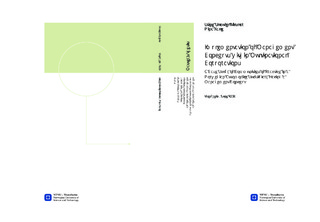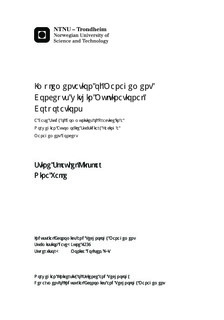| dc.description.abstract | Due to increased competition and fluctuations in the highly globalized business environments, managing change has become a key to organizational success. However, changing organizations is difficult. As a consequence, the world has witnessed an ever-increasing focus on management concepts, or fads, that promise success. As such practices are complicated to transfer, especially across national borders within multinational corporations, this is a topic of high current interest. The purpose of this thesis has been to address possible explanations for difficulties in implementation of management concepts within multinational corporations. Not only must the transfer from the headquarters to a subsidiary be understood, but also the further transfer with respect to local stakeholders within the recipient company. Companies constitute a range of different social configurations which can be identified as communities of practice with respect to a set of unique characteristics. Identifying and analysing such social configurations within the subsidiary is thus a fruitful approach to gain an understanding of the further transfer of the concept within the case company. This thesis explores the organizational dynamics that emerge as community of practice within a subsidiary of a multinational corporation (MNC) is being faced with a management concept which is developed at the foreign headquarters.This is a single case study of communities of practice within a subsidiary; a Norwegian automobile company, implementing the management concept of the MNC, which based on principles of Lean Production . The implementation of this concept in the subsidiary has not been entirely successful, as many difficulties have occurred. For this reason, the thesis aims to address the possible explanations for the experienced difficulties. Data has been gathered during a period of several years from March of 2010 to October of 2013. This has mainly been done through a research project on lean , in which the case company is a participating actor. Interviews and observation studies have been conducted, in addition to the writers short-term employment in one of the units at the case company during three weeks in May 2013. Few empirical studies have been conducted on the implementation of management concepts seen from the recipient s point of view. Due to the wide access to data gathered over several years, in addition to the authors having worked at the plant, this report provides an in-depth understanding of the specific company and the challenges it is facing.In order to carry out the analyses, a literature study was conducted on previous and current research on organizational change, management concepts and fads, implementation of concepts, the content and contextual embeddedness of transfer, and communities of practice. As the main research question is highly complex and comprehensive, six subordinate questions have been derived. For this reason, each chapter of the case study is dedicated to provide an answer to one of these, respectively. The different analyses all expand on the previous ones, but focusing mainly on the specific topic of chapter. By drawing connections between the respective analyses, five main findings can be drawn from this study. Firstly, there is a misfit between the concept and the implementation; the concept attempts to facilitate involvement and communication, although employees are not involved in the process of implementing the concept, and the essence of the concept is not communicated to a sufficient degree. Secondly, there is a poor assessment of the employees responses to the change efforts, as the negative response cannot only be explained as result of the concept in itself, but also of the way it is being implemented. Thirdly, the role of mid-level management is identified as problematic, since it functions as what can be conceptualized as a buffer of hypocrisy . Fourthly, the concept is implemented, although not yet institutionalized. The use of elements of the management concept is not alone a confirmation of a successful implementation. Finally, the community of practice in itself is an obstacle to the implementation of the concept, as it resists interference from the outside. Consequently, due to the complexity of the transfer, this thesis has demonstrated that there is a wide range of different aspects that should be addressed in order to understand and thus prevent the difficulties of the implementation.For the case company, these findings would add to the understanding of the experienced difficulties, and thus form the basis for further implementation and organizational change of the company in general. In addition, this study provides contributions to the literature in form of three frameworks for identifying communities of practice, comparing communities of practice, and finally, examining the occurring tensions as a community of practice faces a management concept. Although the master s thesis describes a contemporary phenomenon in a single company, these developed theoretical frameworks are considered useful also for other studies on similar issues. | nb_NO |

